

The life and times of Denny Savage, a Funny Car driver's Funny Car driver
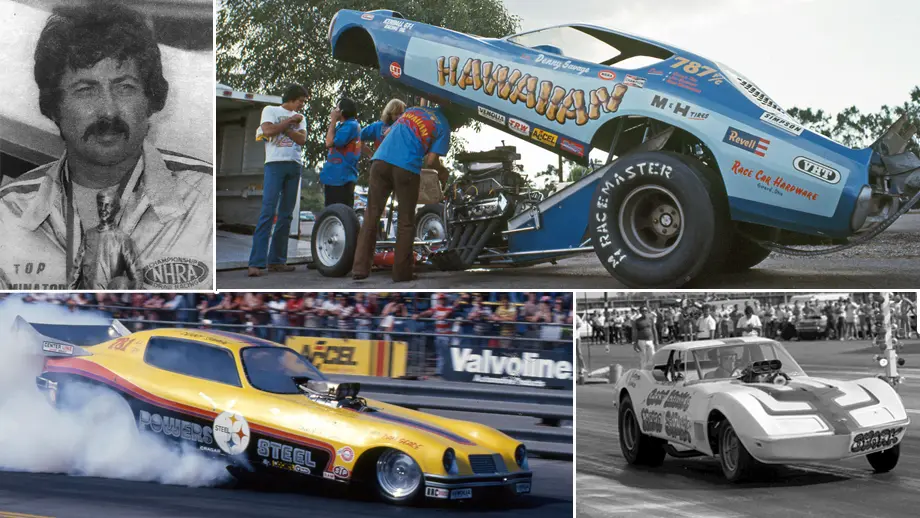
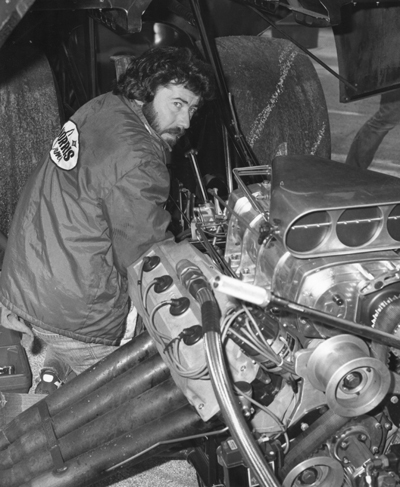
The name Dennis Walter Petersavage may not roll off the lips of drag race fans and historians, but for the better part of two decades, he made his presence known in the Funny Car ranks as Denny Savage, a guy who could and would drive any Funny Car whose owner tossed him the keys. He drove for greats of the sport like Roland Leong, Farkonas-Coil-Minick and Joe Pisano, and more than a dozen others. This is his story.
With the help of some of these guys, I’m going to share his story because it’s worth telling. Savage is 75 and still with us, but his memory has been battered by two strokes and other age-related ailments, so we're going to give him the assist. His son, John, first reached out to me last week trying to get a replacement NHRA Wally for his dad’s lone NHRA national event win, from the 1978 Summernationals, and, as things usually do in my little Dragster Insider ecosystem, one thing led to another and before long I was chatting with Denny, who’s at an assisted living home in Florida. Despite the memory gaps, I could tell that talking about racing really brightened his day; racers are like that.
Savage’s Funny Car career, which began in the early 1970s, ended in the mid-1980s, not long after I started with NHRA National Dragster, but we’ve chatted a few times on the phone over the past decade, so I’ve got some good source material. Denny also was a prolific poster on some drag racing message boards before his strokes, so I’ll be able to cull from those and other sources to fill in some of the blanks that Denny couldn’t.
By his own count, Savage drove 18 different Funny Cars, but I think that may be an undercount depending on how you tally them, but he was nonetheless the definition of a journeyman driver, the kind of guy that a team owner in need could call and plug into his car with minimal fuss and ramp-up.
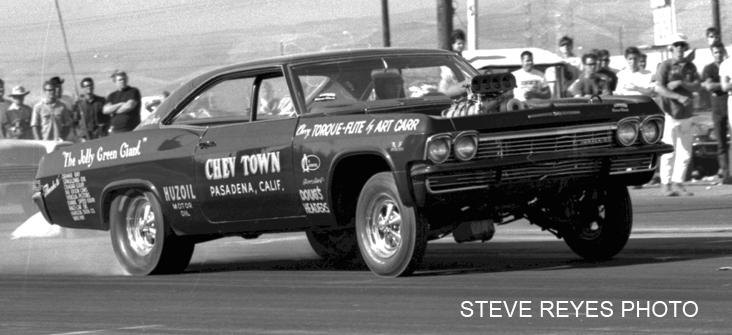
Born in Biloxi, Miss., Savage’s childhood home was a moving target as his father, who worked for the OSI and the CIA, had many posts around the world. The family finally landed in Seattle in the late 1950s, and Savage quickly discovered drag racing, competing at the newly opened Pacific Raceways, where he competed in a GMC six-cylinder-powered ’40 Chevy. As his reputation grew, he got offered a ride in Bob Davis’ supercharged ‘65 Impala, a Funny Car forerunner known as the Jolly Green Giant, and drove the follow-up car, a Corvette, with which he traveled the West Coast and ran into the 8.70s at 170 mph.
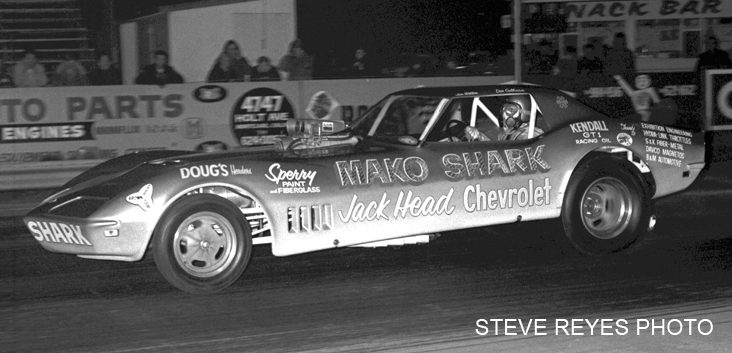
When the Corvette was sold from beneath him in 1967, he stayed in the nitro hotbed that was SoCal and landed a ride in the Mako Shark Corvette of Jim Wetton, which was sponsored by Jack Head Chevrolet, where Savage worked as a mechanic, beginning a long career in the auto dealer business that eventually saw him rise to the position of service manager in the 1990s.
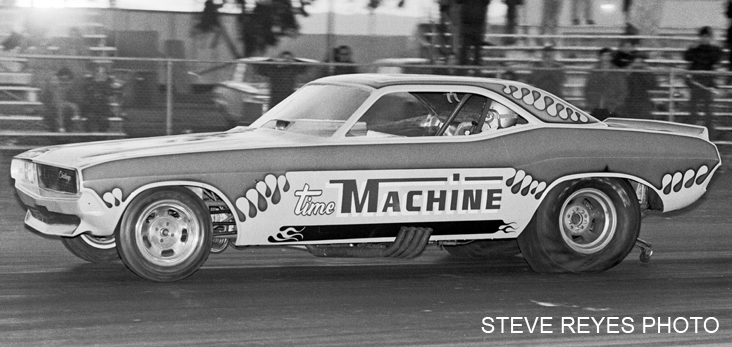
Savage’s first real full-time ride was in Bob Taylor’s Time Machine Challenger (and, later, Vega) that, according to Savage in a 1997 National Dragster interview, was the first car to run one of fuel-system genius Sid Waterman’s new WRE 426 Hemis.
As his notoriety spread, Savage got rides with Kelly Chadwick (Chadwick decided to go Pro Stock racing and turned his flopper over to Savage) and Dick Bourgeois, whose Romeo Palamides-built Doug’s Headers Vega was based out of Chicago.
It was that Windy City association that landed Savage some of his best rides. It was there that he met Leong, who was in town with driver Mike Van Sant and staying at Palamides’ shop while the Hawaiian underwent repairs.
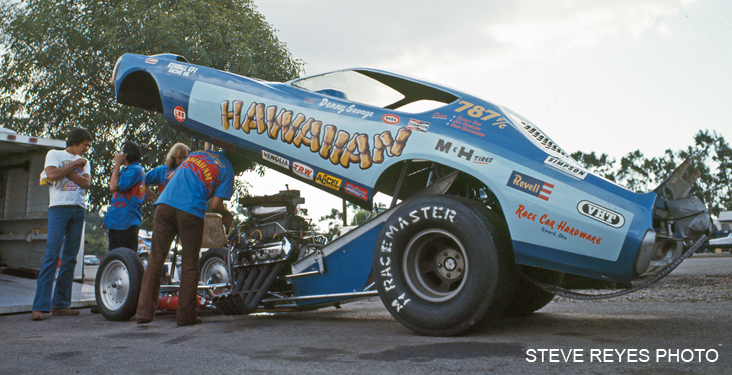
In an interview I did with Savage years ago chronicling the comings and goings of Leong’s many drivers, Savage explained, “I was finishing a crank replacement in the Vega (with the engine still in the car); he was amazed by that. After lunch that day, he came back and found me mounting a new set of slicks by hand (not an easy chore) and commented, ‘You do everything, huh?’ Roland was having a hard time with Mike Van Sant at the time; he wouldn’t work on the car. Before Roland left that day, he asked me, ‘You want to work for me?’ I was kinda starstruck, and I said, ‘Sure,’ and I left with him that Saturday to go to Martin, Mich., for a big match race. On the first run that night, the car went into a big wheelstand and broke all the framerails in front of the motor. Roland was very upset because he was supposed to run the next day in Rockford, Ill.
"I called Romeo, and he said he’d meet us there at about midnight. We loaded up, went back to Chicago, worked all night, basically front-halved the car. Somewhere in the middle of all that while Mike was sleeping in Romeo’s office, Roland told me, ‘If we get this fixed and make it to Rockford tomorrow, you drive my car.’ We made it, and I drove at Rockford. The next day on the way back to Chicago, Roland dropped Mike off at O’Hare [Int’l Airport], and he went home.”
Savage became the 12th driver in Hawaiian history. The duo ran the last half of the 1974 season on the demanding match-race trail — “I worked my ass off for Roland,” he said — but their run together ended in a big top-end blaze at the 1974 Supernationals at Ontario Motor Speedway.
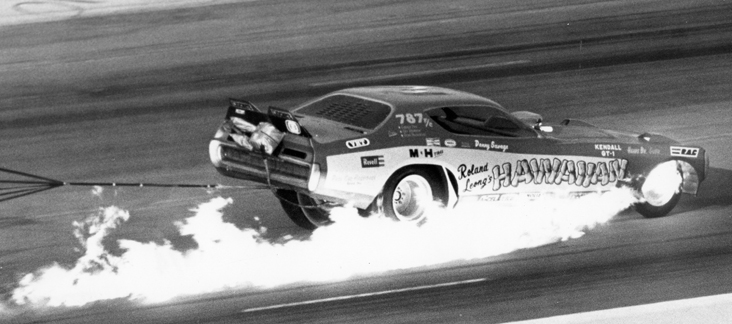
“A week or so later, after I recovered, I went to Roland’s house to work on the car. Norm Wilcox was there, and Roland told me, ‘This is my new driver.’ I was crushed. Later, I heard that Roland thought that the fire scared me, and I didn’t want to drive anymore. Back then, I wasn’t scared of anything.”
I talked to Leong the other day, and he doesn’t remember the discussion going that way, but did say that he hired Wilcox for his fabrication skills to help him rebuild the car after the fire and ended up driving the new Hawaiian Monza in 1975.
Savage’s Chicago connection also opened the door for his next opportunity when Austin Coil called to ask him to replace Ron Colson in the famed Chi-Town Hustler. At the time the Hustler was pretty much a match-race machine, and maybe not the best runner, but Savage quickly won Coil’s respect.
“He was probably one of the better drivers I had,” said Coil, high praise from a guy who also had drivers like Pat Minnick, Clare Sanders, and Frank Hawley. “I think he was a better driver than he was generally given credit for. Our car wasn’t the best at the time so no one noticed. It’s a bit of shame.
"He had a pretty good feel for when the tires were coming loose, and this was before we had computers, so the driver’s feel was important to the tune-up. Early on I told him, ‘If you have a sensitive enough feel — and I think you do — the idea is for the car to go down the racetrack in the middle of the groove, and if it won’t do that by turning the steering wheel, then you need to make it go there by easing back on the throttle, and there will be a spot where it follows where you want it to go.’ The next week we were at some [not-so-great] track, and he went down there slicker than [heck]. That’s when I knew he could be an excellent driver.”
During his tenure with the Hustler, Savage also got a chance to add a very cool car to his driving résumé: “Jungle Jim” Liberman’s Vega.
In a message board posting a few years ago, Savage wrote, “ ‘Jungle’ was quite a guy. Coil and I stayed at his house in Westchester, Pa. when we were on the East Coast. Parties and good times. I even drove his car one night at U.S. 30 in Gary, Ind. Coil and I were helping him 'cause we weren't booked in there. He got in a fight with Pam, and up and left. He told Coil, ‘Put Savage in there, and get my money, I'm outta here.’ Never even sat in the car, and it was a little awkward, but we set low e.t. and runner-upped in the final.”
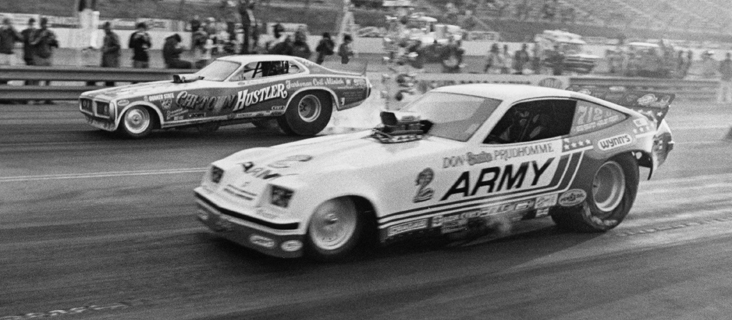
The 1975 season concluded with Savage taking the Chi-Town Hustler to its first NHRA national event final, where he, like almost everyone else that year, fell the wake of Prudhomme, who won for the sixth time in eight starts. A round earlier, Prudhomme had clobbered Raymond Beadle with the sport’s first five-second Funny Car run, a 5.98, while Savage had run a best of 6.21 in beating John Lombardo that same round after earning a pair of bye runs when Dave Condit couldn’t fire for round one and Wilcox, the man who had replaced him in the Hawaiian, couldn’t make the second-round call after he rode out a top-end fire of his own. Savage and the Chi-Town tried hard but smoked the tires against Prudhomme’s 6.15.
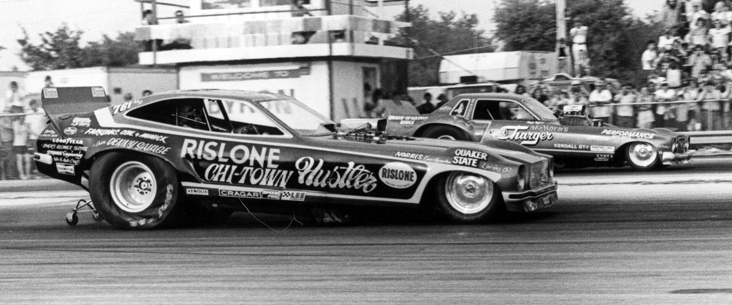
After taking off the 1976 season to spend time with his family, Savage returned to the Chi-Town camp to drive their new Mustang II for another round of match racing.
"We spent most of our time match racing," Savage told National Dragster in a 1978 PROfile feature. "We had a lot of fun and didn't really go to any national events. Our best that season was 6.17 at 232 mph."
Savage also drove (briefly) Dennis Fowler’s Rat Trap flopper then took over the wheel of good friend John Hoven’s new Midnight Special Satellite but crashed the car on his maiden pass at Orange County Int’l Raceway.
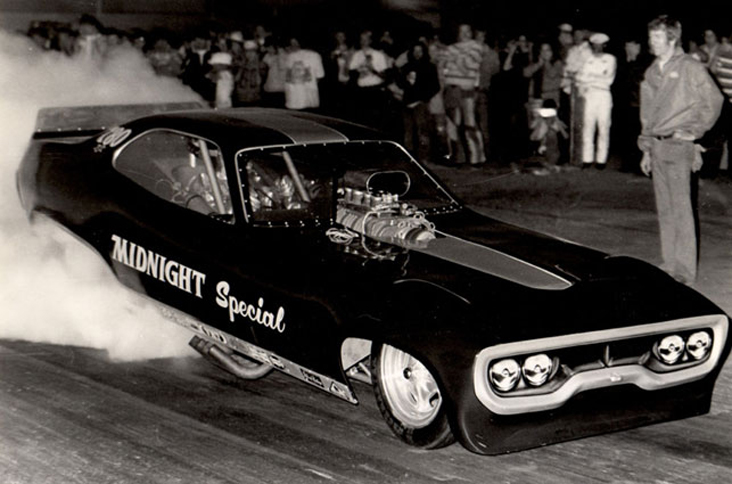
"The front torsion bar broke at about 300 feet, causing the car to make an immediate left turn and crash over the guardrail,” he wrote in another post. “The body flew off about 100 feet into the air, and the car was bent up pretty bad. I sustained minor rib injuries and other bumps and bruises. John spent a long time rebuilding it and then sold it to the people that made the movie about Shirley [Muldowney, Heart Like A Wheel]. It's the car that was in the movie."
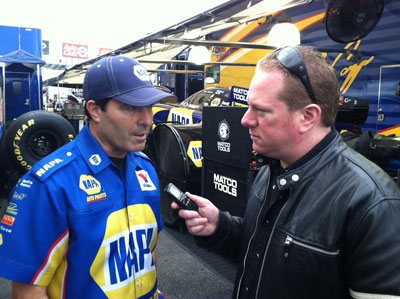
Hoven’s son, John, who more recent fans may remember as being part of my National Dragster staff for a few years and who wrote this piece for the Insider column before that, remembers Savage well.
“Back in the day, Denny Savage was everything race fans imagined a Funny Car driver to be,” he said. “No, he wasn't the perfect pitchman, like John Force. Nor was he the fan-friendly, always smiling frontman that Ron Capps is. Yet, Savage was beyond the coolest cat in the room. Even his name was cool: Savage.
"Savage was good-looking, had a silver tooth (that you could only really see when he talked because he just had that tough-guy stare about him most of the time), and he quite often had a toothpick in his mouth. Next to Don Prudhomme, Savage just might be the coolest guy to ever drive a Funny Car. He certainly drove more of them than anybody else.
“I was pretty lucky growing up. Savage and my dad were close friends, so our two families had many dinners together and spent time hanging around one pit area after another at various racetracks. In many ways, my dad and Savage were almost a perfect match. My dad was a builder, a tuner, a thinker, and an inventor. He was all about the engine and the car. Savage was willing to drive the wheels off of anything, the epitome of, 'Have helmet, will travel.'
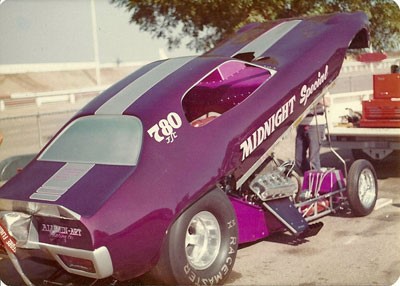
"My dad asked him to drive several cars he owned or tuned through the years — sometimes with just a few hours’ notice. Yet, there was one run in particular they often joked about. At OCIR, on what should have been a shakedown run during a day of testing, Savage crashed my dad's purple Satellite. The Midnight Special would never race again. It became a moment in time he loved to jab my dad about — a man who took incredible pride in his work and always bragged that keeping his driver's safe was priority No. 1 at the track. 'That's the only car I ever crashed, Hoven,' he'd tease. My dad didn't take grief from anybody. But a one-liner from Savage was something my dad had the utmost respect for, simply because of who was delivering it.
“Although he drove for some of the biggest names in the sport's history, it's a true shame Savage never had an extended run with a top team. He absolutely made his mark on the sport; every racer I've ever spoken with about Savage has fond memories of the man and his immense talent in the cockpit of a nitro-burning flopper. With a little more notoriety and connection with the general public, Savage's racing life would make for an unbelievable movie. He's a real-life version of what we all think a Funny Car racer is and should be. You were in awe just to be in his presence.”
Savage hooked up with Arizona businessman John Powers in 1978 for what would be his most successful ride. With the backing of the family business, Powers Steel, and crew chief Dan Geare, the team embarked on an amazing season. He didn’t win the championship in 1978, but he arguably had a better year than NHRA world champ Don Prudhomme.
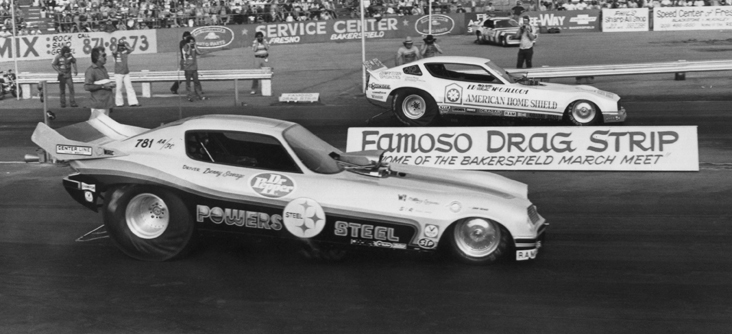
After opening the season by qualifying No. 6 at the Winternationals and reaching the second round, they won the March Meet, beating Ed McCulloch in the semifinals and Tripp Shumake in the final round. Later that year, they won one day of the Olympics of Drag Racing at Great Lakes Dragaway and also claimed three IHRA national event wins and the IHRA championship, but their biggest NHRA score came in July when they won the Summernationals.
As he had at the Winternationals, Savage qualified No. 6 in E-Town with 6.139, just five-thousandths ahead of McCulloch, who would end up being his final hurdle to laying his hands on his first Wally trophy.
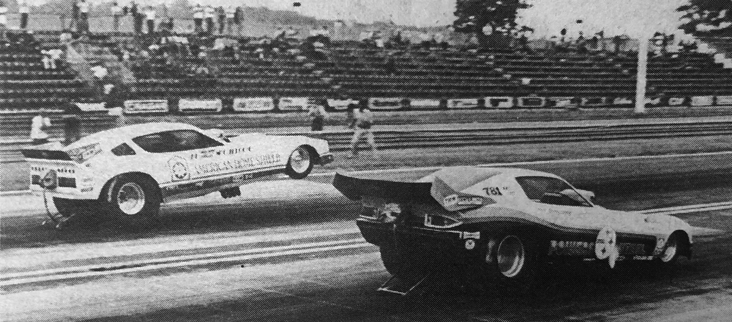
Savage beat George Johnson in round one, then red-lighting Al Segrini in round two, and John Lombardo in the semi’s with a series of 6-teens, with a best of 6.12. McCulloch had run as quick as 6.09 in beating Bob Pickett in round one and was the heavy favorite in the final round, but his American Home Shield Arrow launched into a “Jungle Jim”-worthy half-track wheelstand that cost him the race as Savage raced on to victory.
Savage’s son, John, remembers the weekend well, as he got to travel with the team while on summer vacation, but back then, by New Jersey state’s Draconian laws, you couldn’t even be in the pits until you were 14 or in the staging lanes until you were 18.
“I was only 9 years old, so I had to hide in the sleeper to watch him run,” he remembers. “The final got rained out until Monday, but my parents just thought it would be too hard to hide me because there weren’t going to be a lot of people out there Monday, so I stayed at the hotel with my mom and didn’t know he’d won until he came back to the hotel.
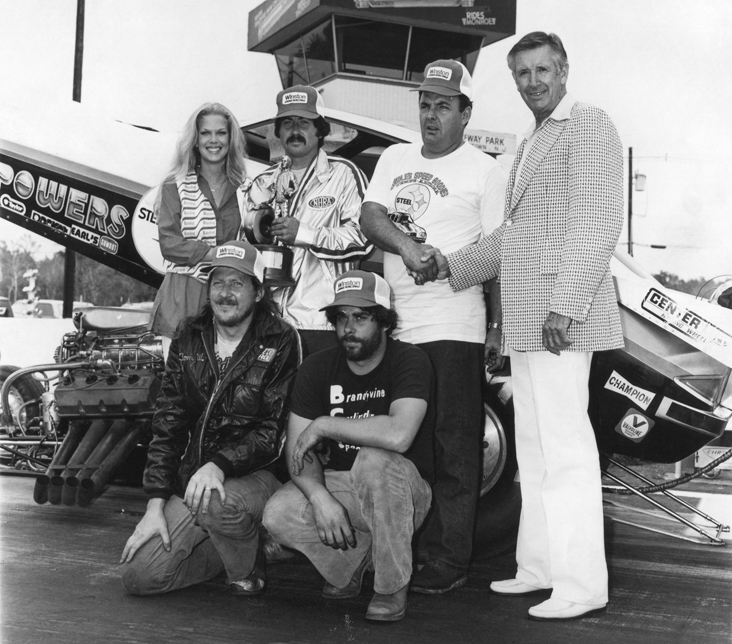
“I got to spend the summer on the road with him and Dan Geare, and it was awesome to spend time with my dad because unless he was racing close to home, most of the year he was on the road running races. I got to work on the car some, but my first job every morning was to get my dad a coffee and Dan a Pepsi. It was a good time to be around the sport. Raymond Beadle was my favorite, and I remember the guys all getting together in the pits to play poker between rounds."
The Powers Steel team wrapped up 1978 with a huge win at OCIR’s Manufacturers Cup meet, where they beat Prudhomme in the final round.
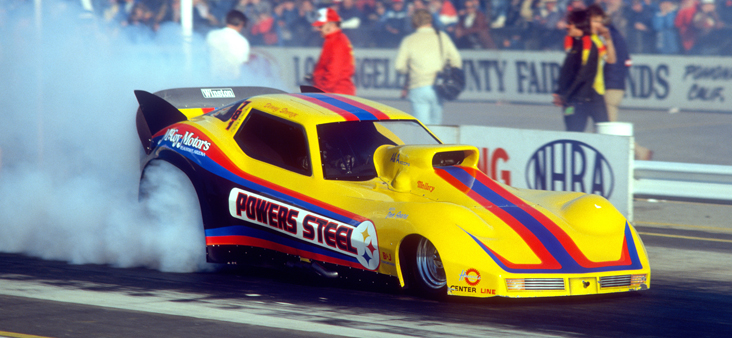
Savage drove for Powers through the 1982 season, and their 1981 was memorable because of the swoopy car pictured above that had an enclosed blower and other aero tricks. Like most trick-laden cars, it didn’t live up to its full expectations in part due to the tricks.
“The aero stuff worked TOO good,” he posted once. “It had so much downforce at the big end, at 220 mph it was bending the front axle. Most of the aero stuff, you can't see. That car was ahead of its time in a lot of respects. It had a fuel pump that no one else ran, with half as much volume of fuel as most were running. It also had a 3-speed B&J transmission, a birdcatcher injector hat, and a reverse-rotation blower that no one else ran. The main difference between that car and most others, was, with the big fuel volume we ran, it never hurt itself. We would generally go 30 runs or so, before pulling the heads off to look at pistons.”
After the Powers deal ended, Savage briefly drove the Custom Body Enterprises car and ended up working for John Martin, whose car he also drove briefly. Between those two rides, he also drove Pisano’s pretty Dodge Daytona in 1984, but his tenure was cut short by a trailer fire that consumed the operation while en route to the NHRA U.S. Nationals.
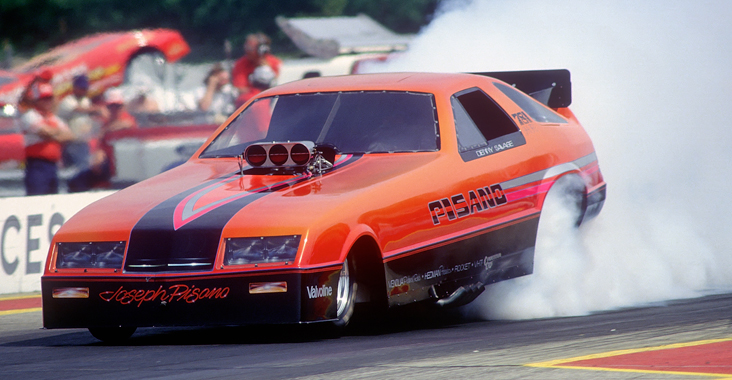
“It was me, my dad, and Kirk Kuhns in the truck,” recalled John. “I was excited because I’d never been to Indy. We got to Needles [Calif.] and pulled over because the trailer brakes were on fire. We tried to put the fire out but couldn’t. We just stood there and watched it burn on the side of the highway.”
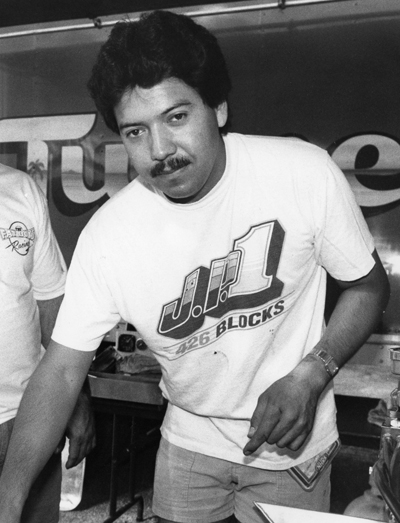
Future two-time NHRA Funny Car champion Cruz Pedregon, who was the team’s truck driver, normally would have been on that trip but was on Joe P.’s naughty list for missing work that week. He did aid in the recovery of what was left, bringing a huge forklift to the scene to bring home the remains. “There was almost nothing left,” he remembers. “It pretty much burned to the ground. The fire was so intense it even burned the highway, and Pisano had to pay for it to get repaved.
“Denny was a very interesting guy,” Pedregon remembers. “He was a wild man. Definitely an original, old-school, hardcore veteran Funny Car driver. He had an edge to him, and he was fearless. I remember being on the road, we were in Bristol, in the station wagon heading to the hotel. Denny was driving on some little country road, and it was me and [crew chief] Gary Slusser and the crew in there and all of the sudden there was a truck coming head-on at us in our lane. I was in the passenger seat and just remember Denny calmly drove the car into the weeds to avoid it and then back onto the road. That’s a Funny Car driver for you.”
Denny Savage was definitely a Funny Car driver, one who probably never got all of the accolades he deserved at the time while racing in the shadows of guys like Prudhomme and Beadle, but I’m happy to share his story and bring it back to life.
"I had a lot of fun and drove a lot of cars," he told me. "Driving one of those early Funny Cars was a thrill, I guarantee you that. I got to race all over the country, and you name it, I've been there and done that. We had a good time back then."
Phil Burgess can be reached at pburgess@nhra.com
Hundreds of more articles like this can be found in the DRAGSTER INSIDER COLUMN ARCHIVE



















































